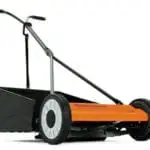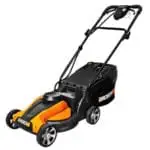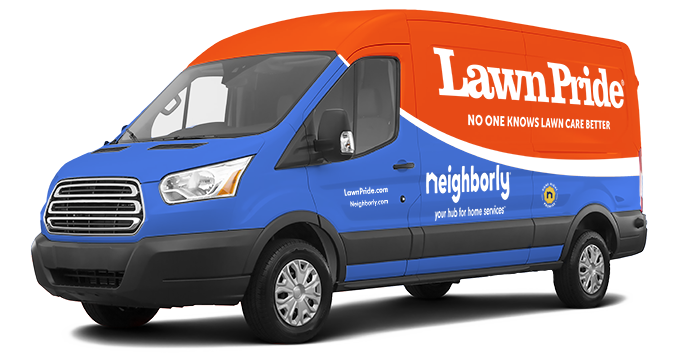
Walk-behinds There are several types of walk-behind mowers. The widest variety comes into play with regard to power source. There are gasoline-powered mowers. Electric-corded mowers. Battery-powered mowers. And human-powered mowers. Again, the power source is largely based on the size yard you need to mow. Gasoline offers the most power and range. Corded-electric, battery-powered and human-powered versions are best reserved for yard of around a quarter acre or less. Which leads us to the next consideration, cutting action. The average gas-powered walk-behind mower is classified as a rotary mower. The blade moves like those on a helicopter. The other option is a reel mower. This is the "old-fashioned" style mower with a "drum" of blades that rolls in a forward motion. Rotary mowers cut the grass by sheer force, whereas reel mowers cut the grass with a scissor action.

Ride-on mowers So are riding mowers easier to understand? Sort of. There are three general classes. The riding mower, the lawn tractor and the zero-turning-radius mower. The riding mower is a rear-engine, smaller rider that has a narrower deck for mid-size yards. Riding mowers are best for yards of 1/3-3/4 of an acre and for those yards with many obstacles or narrow pathways. Lawn tractors are larger than riding mowers and look like small farm tractors. The engine is upfront and they generally have larger cutting capacity than riding mowers. These mowers can also accomodate additional accessories to help with other chores around the yard. The zero-turning-radius mower is comparatively new to the mowing world. Even though they've been around for a couple decades now, they are just now becoming popular with home owners. The ZTR, as they are called, can literally turn with no turning radius, making them an exceptional choice for yards with many trees or other obstacles that need to be navigated.

Making the decision OK, so first decide based on yard size and your own physical capabilities. If you have a smallish yard, but are limited in your ability to walk, then maybe a small riding mower will be a better choice. On the flip side, if you are physically active and have a yard of a half-acre or less, a walk-behind may suit your needs. Next, choose the style and power source. Even among riding mowers, there are battery-powered options, so decide which power source best meets the needs of your lawn. Thick grass, hills and larger lots will require more power. Lastly choose based on accessories or options. Self-propelled walker? Bagger? Mulching? These are options that refine your choice. Whichever option you choose, be sure to keep it in proper running condition, sharpen the blade as often as required and mow to a height of 3-4 inches. And as always, let us know if you have any questions.
